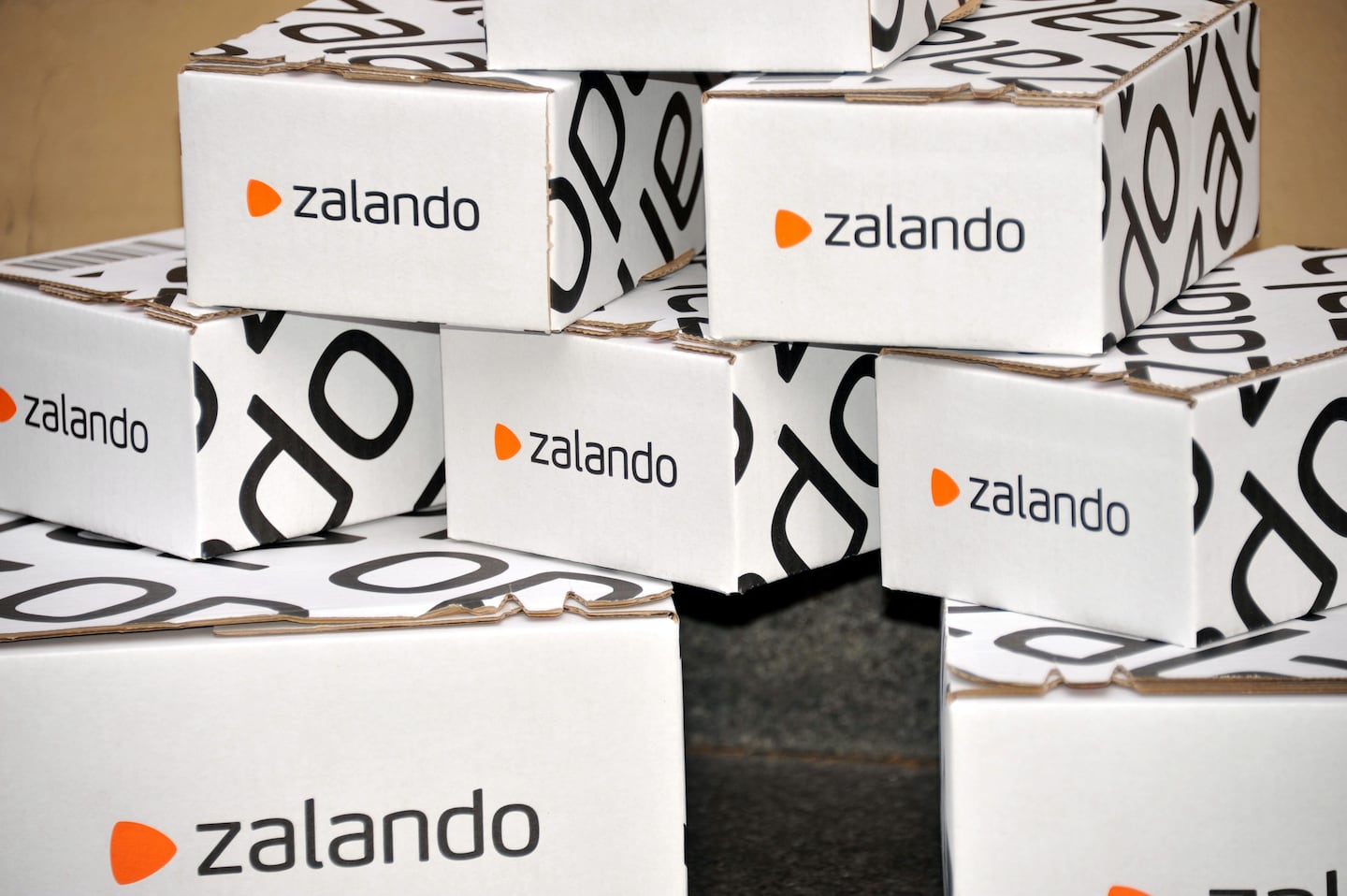
The Business of Fashion
Agenda-setting intelligence, analysis and advice for the global fashion community.

Agenda-setting intelligence, analysis and advice for the global fashion community.

BERLIN, Germany — Zalando, Europe's biggest online-only fashion retailer, is working to counteract a fall in average order size and to ensure more returned goods are resold after it reported the slowest sales growth since it was launched a decade ago.
Facing rising competition from e-commerce players like Amazon.com and chains like H&M, Zalando cut its 2018 outlook for a second time in as many months in October due to the unusually long, hot summer, sending its shares tumbling.
Shares in Zalando, which have fallen by a quarter in the last year, were 6.4 percent lower at €32.19 by 10:14 GMT, making them the biggest decliners on the German MDAX index .
"Weaker sales growth versus consensus and continued deterioration in basket economics will disappoint," said UBS analyst Andrew Hughes, who rates Zalando "sell."
ADVERTISEMENT
Third-quarter sales rose 12 percent to €1.2 billion ($1.37 billion), missing average analyst forecasts for €1.22 billion, and well below the 20 to 25 percent annual growth it has targeted for years.
In contrast, British rival ASOS last month met its full-year sales growth forecasts and reported a 28 percent rise in pretax profit, flagging years of double-digit sales growth to come and propelling its shares higher.
About half of the products Zalando sells are returned, with most of them processed and resold.
Zalando reported a quarterly adjusted loss before interest and taxation of €39 million, which it blamed on a slow start to sales of colder weather clothing, as well as rising fulfilment costs and problems with how it handles returns.
Returns
About half of the products Zalando sells are returned, with most of them processed and resold.
Previous changes to the handling of returned goods that needed to be ironed or repaired resulted in fewer of them being refurbished, an issue that has since been resolved, co-CEO Rubin Ritter told journalists.
Zalando said profitability was also hit by a 7 percent fall in average order size to €57.50, despite efforts to bolster orders by adding beauty products to its range in the hope that customers would add a lipstick when they buy a dress.
The company is taking steps to try to increase the profitability of smaller orders, including making size recommendations to reduce the likelihood of returns, and trialling a minimum order value of €25 in Italy, Ritter said.
ADVERTISEMENT
He does not yet know if Zalando will extend that to other markets, as some analysts have recommended.
Higher transport costs and investments in logistics also weighed, although Zalando trimmed its expectation for capital expenditure for 2018 to €300 million, from a previous €350 million, as projects are spread over a longer period of time.
Ritter said Zalando planned a new centralised warehouse to process shipments of garments from brands before they are sent to regional centres for delivery to customers, as it seeks to increase the efficiency of its logistics network.
By Emma Thomasson; editors: Maria Sheahan and Kirsten Donovan
Designer brands including Gucci and Anya Hindmarch have been left millions of pounds out of pocket and some customers will not get refunds after the online fashion site collapsed owing more than £210m last month.
Antitrust enforcers said Tapestry’s acquisition of Capri would raise prices on handbags and accessories in the affordable luxury sector, harming consumers.
As a push to maximise sales of its popular Samba model starts to weigh on its desirability, the German sportswear giant is betting on other retro sneaker styles to tap surging demand for the 1980s ‘Terrace’ look. But fashion cycles come and go, cautions Andrea Felsted.
The rental platform saw its stock soar last week after predicting it would hit a key profitability metric this year. A new marketing push and more robust inventory are the key to unlocking elusive growth, CEO Jenn Hyman tells BoF.